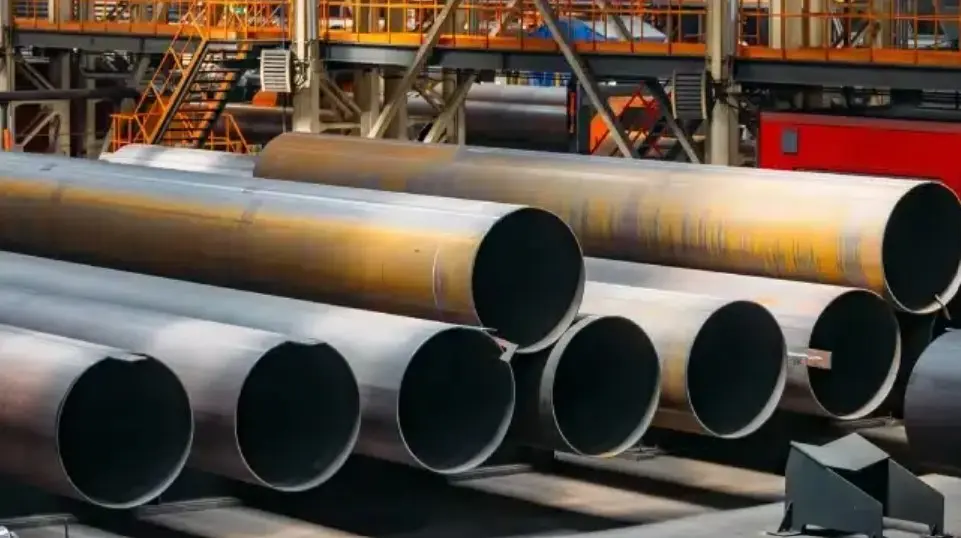ASTM A500 pipe is key for structural steel tubing. It offers strength, durability, and versatility for many industries. The ASTM A500 standard outlines the rules for cold-formed, welded, and seamless carbon steel tubing. This includes round, square, rectangular, and special shapes. These tubes are mainly used in construction and transportation. They are also useful in many other areas due to their strong mechanical properties.
This article looks at ASTM A500 pipe grades B, C, and D. We’ll cover their properties, uses, and main differences. We’ll highlight why using high-quality materials, like UNIASEN Pipe, is important. It ensures reliable performance in many industrial and construction settings.
Understanding ASTM A500 pipe grades.
ASTM A500 includes three main grades of carbon steel tubes: Grade B, Grade C, and Grade D. Each grade has its own distinct mechanical properties. This makes them fit for various applications. Let’s explore these grades in detail:
Grade B (ASTM A500):
Grade B is one of the most commonly used grades of ASTM A500 pipe. It has moderate strength. People use it a lot in construction, transportation, and other structural jobs. This grade is popular because it balances strength, flexibility, and weldability well.
- Yield Strength: Typically, Grade B has a yield strength of 46,000 psi (320 MPa).
- Tensile Strength: Its tensile strength typically ranges from 60,000 to 75,000 psi (414 to 517 MPa).
- Applications: Grade B works well for building frames, structural supports, and construction projects. It offers good strength and moderate stress resistance.
Grade C (ASTM A500):
Grade C steel pipes are stronger than Grade B pipes. They are ideal for tough jobs that require strong pressure and stress resistance.
- Yield Strength: Grade C has a least a yield strength of 50,000 psi (345 MPa).
- Tensile Strength: The tensile strength ranges from 65,000 to 80,000 psi (448 to 552 MPa).
- Applications: Grade C is often used in tough structural jobs. This includes bridges, big industrial buildings, and projects needing extra strength and durability.
Grade D (ASTM A500):
Grade D of ASTM A500 pipe is the highest strength grade available under this standard. It is ideal for tough tasks that need the highest strength and toughness.
- Yield Strength: Grade D has a yield strength of at least 60,000 psi (414 MPa).
- Tensile Strength: The tensile strength for this grade is between 70,000 and 85,000 psi (483 to 586 MPa).
- Applications: Grade D is for heavy-duty structural uses. This includes cranes, power plants, and strong industrial frameworks. These structures face high stress and need materials that can handle these forces.
Key Differences Between ASTM A500 Grades:
The ASTM A500 grades differ primarily in their yield strengths and tensile strengths. These mechanical properties make each grade more suitable for particular types of applications:
- As we progress from Grade B to Grade D, the strength shows a marked increase. This allows more projects to use these materials.
- Weldability:
- You can weld all three grades. Grade B is the most popular choice for welding. Its balanced properties make it a top pick. Grades C and D work well in specialized, high-performance applications. They provide the extra strength needed for these tasks.
- Cost: Generally, as the grade increases in strength, so does the cost. Grade B is the cheapest. Next is Grade C, and Grade D is the most expensive. This is because Grade D has higher strength and stricter manufacturing processes.
Why Choose UNIASEN Pipe for Your Projects?
When choosing steel pipes for your projects, focus on quality and reliability. UNIASEN Pipe provides a variety of top-quality ASTM A500 pipes. This way, you can find the best material for your needs. UNIASEN Pipe offers consistency, durability, and performance, no matter if you use Grade B, C, or D.
Choosing UNIASEN Pipe guarantees the safety and long life of your projects. It’s perfect for those who need reliable, top-notch materials for industrial and construction work.
Applications of ASTM A500 pipes
Each grade of ASTM A500 pipe has its specific applications. However, they all share common uses in structural applications that require steel tubing. The following are some typical applications for each grade:
- Grade B: Building frames, construction scaffolding, and other general structural purposes.
- Grade C: Bridges, large-scale industrial applications, and where more strength is necessary.
- Grade D: Heavy-duty industrial frameworks, offshore platforms, and other high-strength applications.
Conclusion:
Choosing the right grade from ASTM A500 Grades B, C, and D is vital. Every grade has its own strengths and traits. Choose one that suits your project. Choosing the right ASTM A500 grade is key. No matter if it’s a small project or a big industrial build, it impacts success and safety.
For the highest quality and reliability in ASTM A500 pipes, UNIASEN Pipe is the top choice. UNIASEN uses top-notch manufacturing and focuses on quality. This way, you receive the best materials for your structure.
Also Read-5 Types of Anti Drone Technology You Can Use


